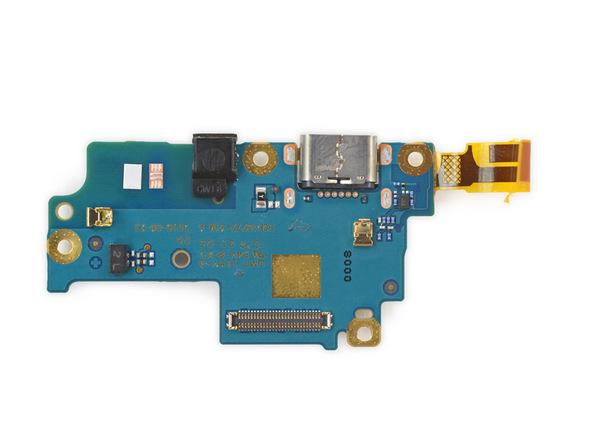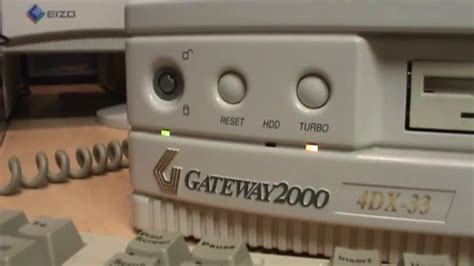GG1
About
- Username
- GG1
- Joined
- Visits
- 205
- Last Active
- Roles
- member
- Points
- 2,159
- Badges
- 2
- Posts
- 483
Reactions
-
Insultingly, Facebook continues to try to convince users that privacy-violating targeted a...
I'm guessing he regrets getting caught saying it rather than actually changing his mind about his "users."AppleInsider said:Right back at the very start, when Mark Zuckerberg started "The Facebook" in Harvard, he described all users as being "dumb f***s." He's since said he regrets it...








-
Google's Pixel 2 XL priced higher than Apple's iPhone 8 Plus but is half as fast, lacks ma...
iPhone Cons:rrrob said:
There are pros and cons to both the Moto X and Apple circuit board designs. TL;DR—in my opinion, they reflect their companies' respective economic situations, i.e., Apple can afford to use a smaller circuit board because it's making a premium-tier product with a high profit margin, and because that product sells in high volume.tmay said:
Strictly speaking, none of the above is industrial design, albeit the industrial design of the external package has a great influence on these circuit board designs, especially at Apple.Soli said:At least the Pixel phones have a better industrial design than the Moto X.
Well, the daughter board of the (HTC) Pixel is still poorly designed and archaic compared to what Apple has been doing since the start of the iPhone.
In case you don't you don't look at teardowns here's the iPhone 8 logic board for comparison. Can you spot the difference?
Moto X Pros:- (Mostly) single-sided. The vast majority of the parts can be attached to the board in a single pass through placement and reflow (soldering), putting less thermal stress on the components. It also provides additional volume for the battery under the circuit board and better physical isolation of RF-sensitive circuit blocks.
- Slightly more surface area, even given the single side used for most parts. This permits the use of larger and easier to place—and hence, cheaper—components. It could also act as a larger heat sink for heat dissipation.
- Fewer board layers. A number are still needed to accommodate pinout from high pin density parts like the Snapdragon, but there's more area to work with on each layer to route traces. And fewer layers make for cheaper panels.
- Good balance of the phone in the hand is easier to achieve since the mass of the battery and circuit board are more evenly distributed across the surface of the phone.
- Fewer circuit boards per panel. This means a greater number of circuit board panels must be processed to build an equivalent number of circuit boards, which could reduce factory throughput. The effect this has on price per circuit board is unclear without knowing the exact stack-up of the Motorola and Apple boards.
- Double-sided panel with tightly packed components enables an incredibly small circuit board. More boards per panel means better factory throughput. The narrower the board, the more volume that's available for the battery, too.
- Doubled-sided. Two major passes through component placement as well as reflow required.
- Intra-board trace layout must be a nightmare. There are hundreds of traces coming out from the pins of the A11 alone which much be routed to memory, SIM, Lightning connector, cameras, display, Touch ID, etc. This also complicates resolving RF desense issues during development (as in, "Why can't you just move that part/trace/via over there?")
- More board layers to accommodate the traces for those high pin density components like the A11. More layers equals higher cost circuit board panels.
- High part density and small components necessitate high-precision solder masking and part placement, i.e., newer, more expensive factory equipment. Heat dissipation also becomes more of an issue.
- Phone balancing becomes trickier with the circuit board and the battery side-by-side.
Doubled-sided. Two major passes through component placement as well as reflow required.
Intra-board trace layout must be a nightmare. There are hundreds of traces coming out from the pins of the A11 alone which much be routed to memory, SIM, Lightning connector, cameras, display, Touch ID, etc. This also complicates resolving RF desense issues during development (as in, "Why can't you just move that part/trace/via over there?")
>>>>True, but obviously Apple engineers have succeeded repeatedly year-after-year with highly density iPhone & iPad PCB's. I wouldn't be surprised if Apple are using one of several special (extra cost) PCB construction techniques to achieve the equally high density inner trace routing.
More board layers to accommodate the traces for those high pin density components like the A11. More layers equals higher cost circuit board panels.
>>>>And Apple don't mind paying a premium for it, either. It achieves their goals of a thin phone.
High part density and small components necessitate high-precision solder masking and part placement, i.e., newer, more expensive factory equipment. Heat dissipation also becomes more of an issue.
>>>>Samsung and others use the same small components necessitating the same high-precision parts placement. Solder masking isn't even used anymore in very small components (it is printed directly on the PCB).



-
Apple's Self Repair Program toolkit - Hands on with what's inside
stevegee said:former Apple Genius here. this is NUTS. nobody in their right mind is going to do this when there are easier, less-expensive routes. I don’t believe Apple has gone out of their way to complicate DIY repairs, it’s just a complex process because the devices themselves are complex, a fact all the self-repair advocates conveniently overlook.Exactly correct! Smartphones are complicated devices requiring specialized tools. Cars today are complicated devices requiring specialized tools. Must I go on? You can't dumb down the repair of complicated devices to the dismay of legislators/whiners.There will eventually be third party (cheaper) solutions for all these tools; it just takes time (see OBD2 scanners, etc. for cars).









-
'High Power Mode' coming to 16-inch MacBook Pro with M1 Max, Apple confirms
-
Apple uses Messages colors to bully Android users, says Google
mjtomlin said:The BIGGEST difference (and arguably the most important), between the blue and green bubbles… is that it shows which messages are end to end encrypted and which are not. All blue bubbles are encrypted. Green are not.From what I've read, RCS may or may not be end-to-end encrypted (Google Messages app has it, but other apps may or may not support it), while iMessage is always encrypted. It seems like RCS (Rich Communication Suite) is more about content than security. So just saying you support RCS does not imply encryption. Perhaps this ambiguity on encryption is why Apple don't support RCS.Edit: RCS does not specify encryption. Source: https://arstechnica.com/gadgets/2022/01/after-ruining-android-messaging-google-says-imessage-is-too-powerful/



-
Right to Repair will never be effectively legislated, until it is fully defined
DAalseth said:I mentioned on another article on the same subject earlier today that I’ve come around to agreeing with Right to Repair, to a plint. Our devices are for the most part boxes containing modules. A battery module, a motherboard module, a screen module and so forth. I agree with the article that it’s unlikely, indeed a bit silly, to demand schematics to allow people to do their own board level repairs. Almost no one is going to want to do that. On the other hand Apple and other’s insistence that the devices are sealed for your protection is too much as well.
If battery and screen replacements were easy and available at more 3rd party shops, then I suspect most of this Right to Repair hoopla would die away. Anything above that should go to Apple, but that would cover the vast majority of repairs people want.I am guessing that the majority of desired repairs involve the battery, screen, glass back, and possibly side switches/Lightning connector. So perhaps Apple can optimise for these repairs (in future models). Will they?All other component repair is realistically beyond the capability of nearly everyone due to the specialised surface-mount technology used in the logic boards, specialised interconnect cables, etc. I once repaired the Lightning connector/flex assembly in an older iPad, and it was very challenging. I had to use the hot-air gun and microscope at work to do it. I doubt Right-to-Repair implies this level of accessibility to repair, but as the article points out, there must be a relevant definition of what's considered repairable.


-
Elon Musk says he talked with Apple about satellite communication
dk49 said:Connecting to Starlink requires a big dish. How will the iPhone overcome that?There's another informative AI article on this feature. The consensus from the comments is that Globalstar are providing the satellite connection.From Wikipedia, Globalstar have 24 LEO satellites providing worldwide coverage. So their orbits should be well-known to the iPhone (based on time and GPS location).So why doesn't the iPhone 14 need a big dish? Because the data rate is VERY LOW, probably 10's of kb/s or even lower. This makes the required signal-to-noise ratio to get the signal out very low, so a small (poor performance) antenna on the iPhone would be sufficient IF pointed correctly (directly at one of the 24 satellites).Apple mentioned that a data compression algorithm will greatly minimize the amount of data to be sent, so sending a few hundred bytes at a very slow rate would take less than a minute, or a few minutes with several retries. I would expect some sort of error correction in the data to help with transmission accuracy. See Shannon's limit.What I don't know is if there is an acknowledgement back to the iPhone. I eagerly await AI's promised article on the physics behind this service!Edit: upon second thought, an ack to the iPhone should be possible, as the weak link (no pun intended) is the iPhone-to-satellite connection. The satellite has much higher power than the iPhone, so I suspect you will get an ack on the iPhone.

-
Facebook shutting down face recognition efforts & deleting data
-
Apple Original 'Severance' cast and crew attend finale event
Japhey said:I’m pretty much in awe at how perfectly Apple has timed things up with TV+. For the longest time it was just a new show here, a new documentary or film there. Then, all of a sudden, boom! They put out arguably the 4 best shows* (imo) on all of television at the exact same time that CODA wins Best Picture? To me, that’s neither luck nor coincidence. What it is is damn impressive.
*Severance, Ptolemy Grey, Pachinko, and Slow Horses.Severance immediately reminded me of that American 90's show Twin Peaks - quirky with unexpected turns.Slow Horses has captivated me also.I'll have to check out Ptolemy Grey, Pachinko, Coda, and a few others. AppleTV is coming into its own now. Again the long play is working.



-
Compared: Apple AirTag vs Tile Pro and Chipolo One Spot
I'll probably get a few AirTags once I start traveling again, but I'm surprised at how visible people want to make this item. Wouldn't the effectiveness be improved if other people didn't know you had this tracker attached to your item? I would bury an AirTag inside the item, such as luggage. Yes, I realize some items are too small (such as keys), so I'd use a nondescript cover in this case.But I realize I'm more practical/functional than fashionable.




